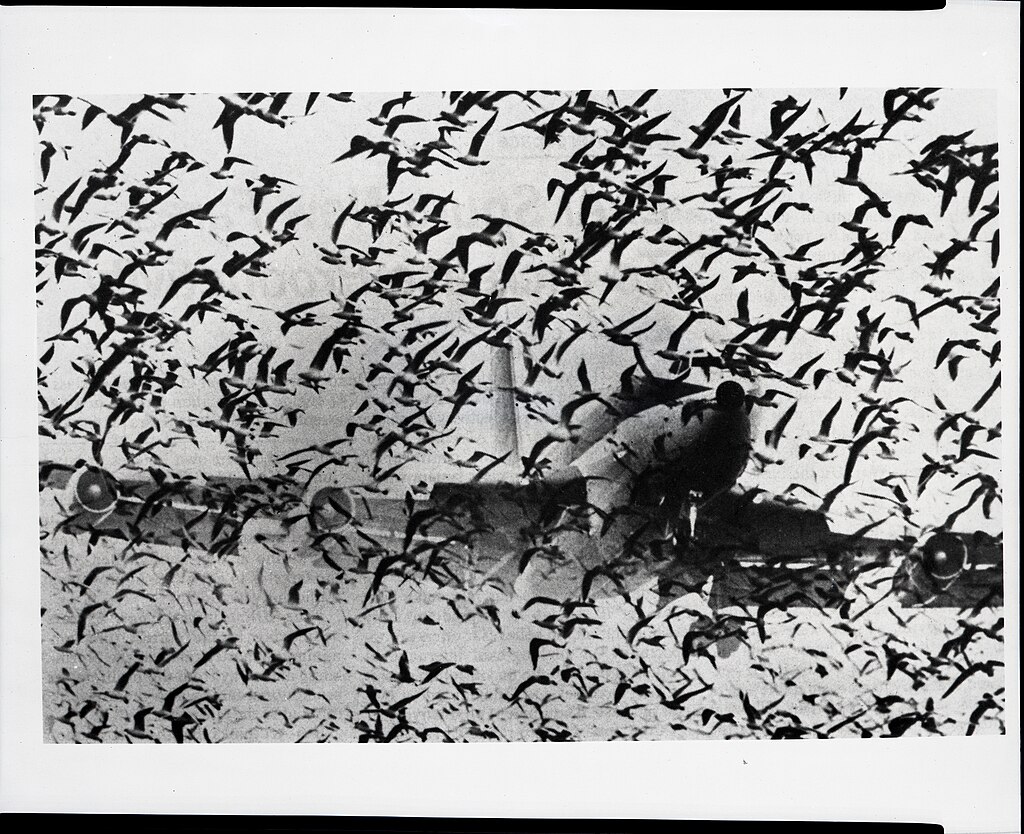
Photo::National Archives and Records Administration via Wikimedia Commons
According to the International Civil Aviation Organization, a bird strike is strictly defined as a collision between a bird and an aircraft that is in flight or on a take-off or landing roll. The term is often expanded to cover other wildlife strikes, including bats or ground animals.
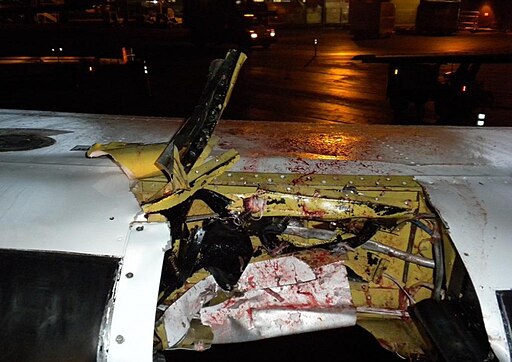
Photo: Federal Aviation Administration via Wikimedia Commons
The severity of a bird strike depends on the plane’s speed and the bird’s size. If the strike causes enough damage, it could force an emergency landing.
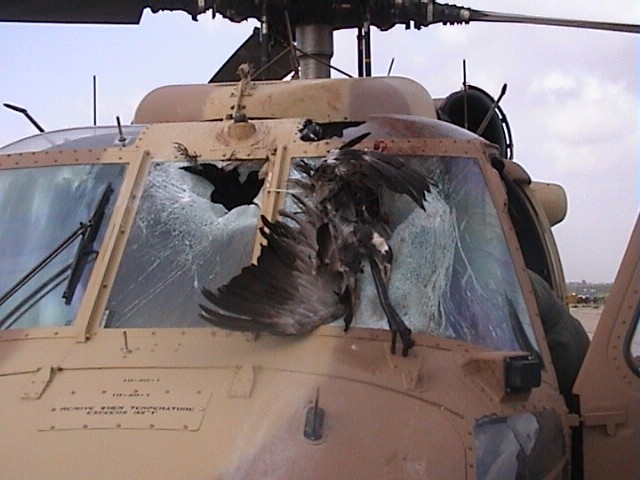
Photo: U.S. military via Wikimedia Commons
The deadliest bird strike on a fixed-wing aircraft was recorded on October 4, 1960, and this incident involving a Lockheed L-188 Electra took the lives of 62 passengers on board. So not only aerodromes but heliports should also look to adapt strategies to minimize bird strikes.
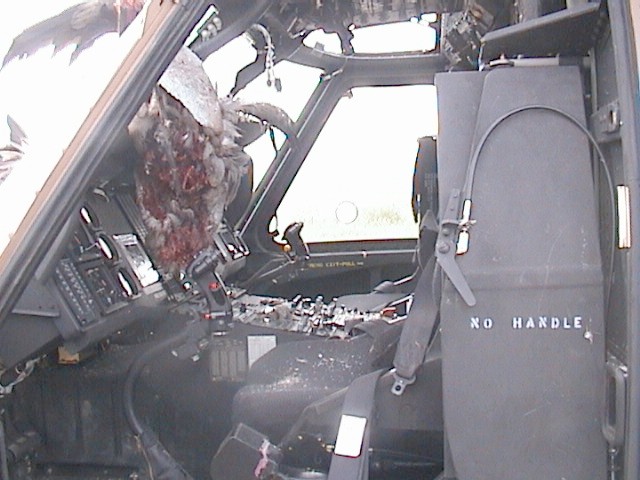
Photo: Wikimedia Commons
In 2023, 19,603 strikes were reported, an increase of 14 percent compared to the 17,205 strikes reported in 2022.For the 34-year period (1990-2023), 296,613 strikes were reported of which 291,547 (98.3 percent) occurred in the USA.

Photo :Henrique Rubens Balta de Oliveira via Wikimedia Commons
In the US alone, up to 16,000 of these incidents can occur every year. This is an almost tenfold increase compared to the 1,800 bird strikes that occurred in the US in 1990.
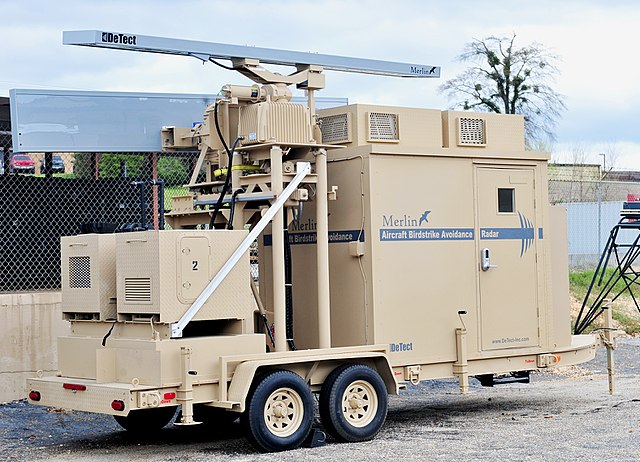
Photo: U.S. Air Force photo, Official United States Air Force Website via Wikimedia Commons
Let’s have a look at methods used by some airports to control bird strikes:
- Radar Systems
- Laser Technology
- Drones
- MERLIN Aircraft Bird strike Avoidance Radar (ABAR)
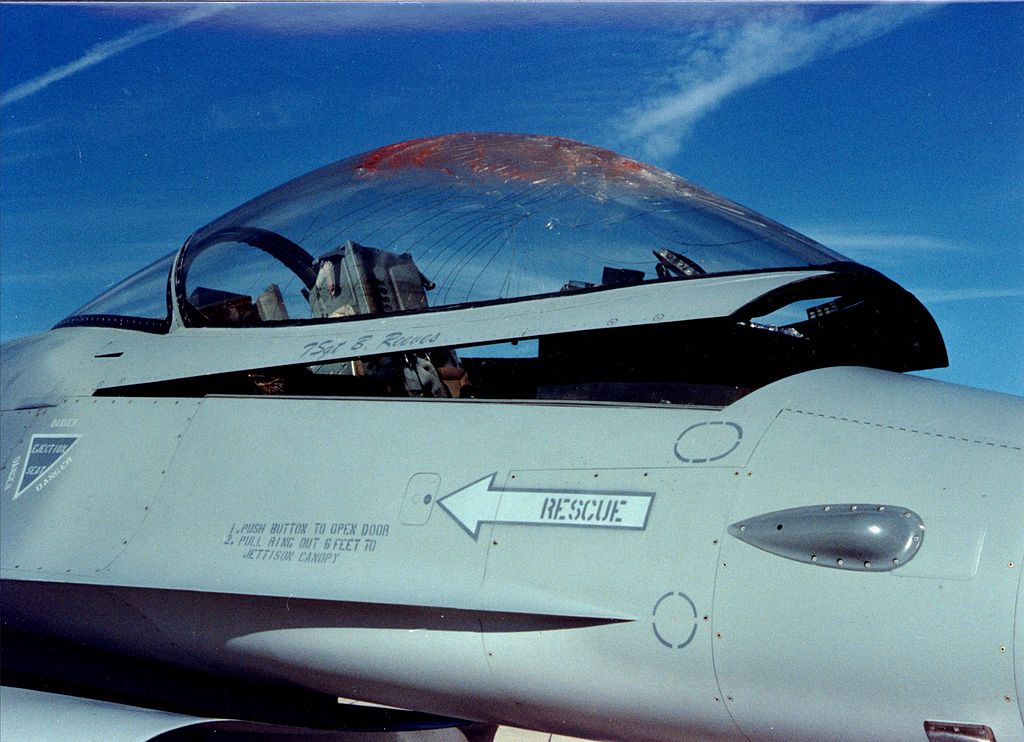
Photo: Wikimedia Commons
Latest Technologies that aircraft use to prevent bird strike
- Having better aircraft paint schemes
- Infrared Bid Detection Systems

Small propeller plane with a man holding a bird in front of it
Photo: U.S. Fish and Wildlife Service Via Wikimedia Commons
Sometimes pilots are unsure if they have hit a bird. They will closely monitor the hydraulics, electrics, pneumatics, and flight controls if a bird strike is suspected or if there were an abnormal indication that would confirm a strike.
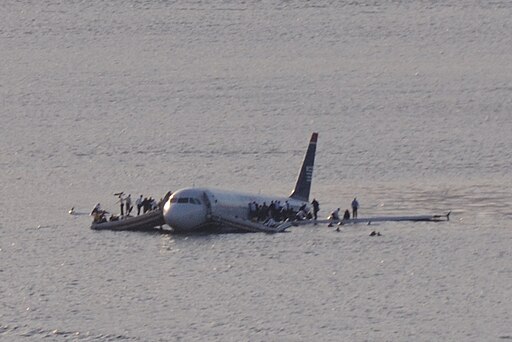
Photo: Greg L via Wikimedia Commons
One of the famous incidents of bird strike is referred to as “The Miracle on the Hudson”. In this incident, an Airbus A320 which met a bird strike had to land in water following a bird strike.
![In 2023, more than 14% of all bird strikes in India were reported in Delhi Airport [in the picture above]Photo: Ganesh Mohan T | Wikimedia Commons](https://aviospace.org/wp-content/uploads/2025/01/Delhi_International_Airport_8.jpg)
Photo: Ganesh Mohan T | Wikimedia Commons
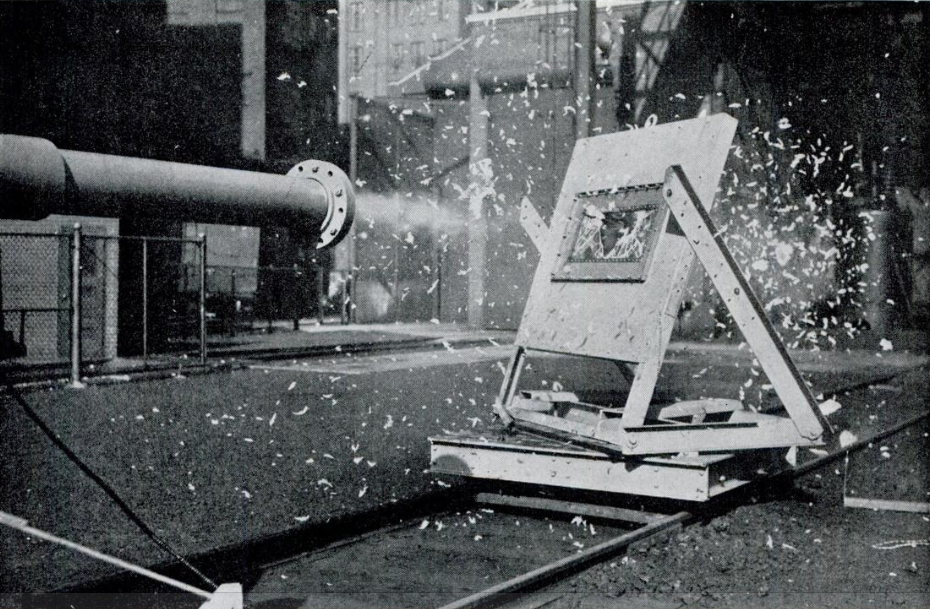
Photo: Flying magazine | Wikimedia Commons
A chicken gun fires dead birds at the aircraft engine during testing to check how resistant the engines are to bird strikes. The fastest chicken gun can hurl birds at speeds greater than that of sound.
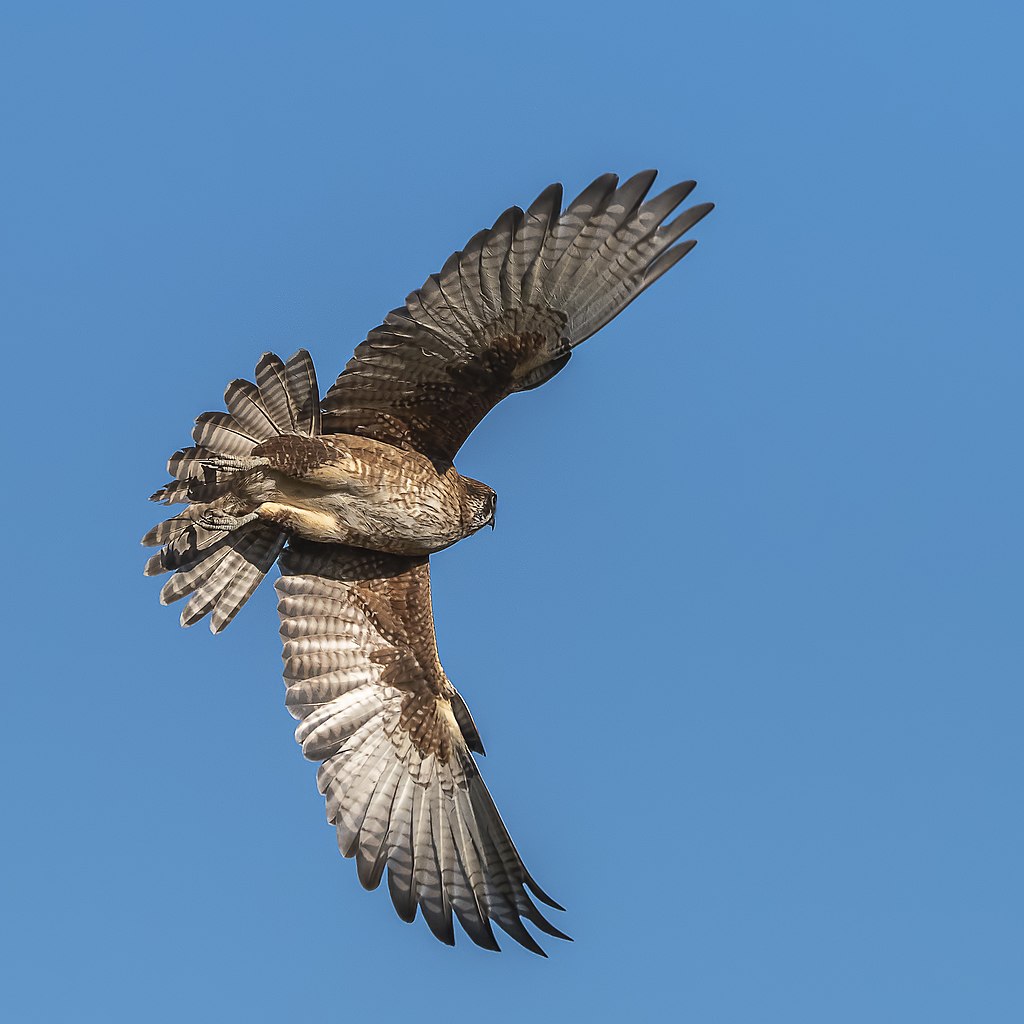
Photo: Gallpix | Wikimedia Commons
There have been tests to scare birds away from a flight course by deploying robot-prey-birds. Some of these have had some limited success.
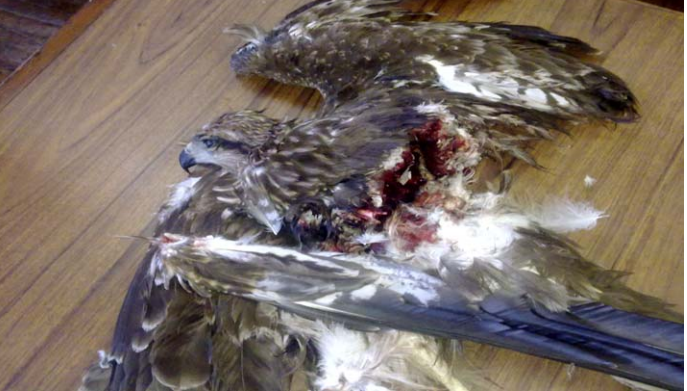
When an aircraft registered 9N-AHA took off from Tribhuvan International Airport (TIA) to the most dangerous airport in the world– Lukla Airport, it met a bird strike, and the aircraft plummeted to the ground, and subsequntly taking the lives of all onboard. The investigation committee of the accident recommended municipalities around the airport to “adopt more effective measures for waste management, kanji house, butcheries and river control in order to reduce bird activity near to TIA.”
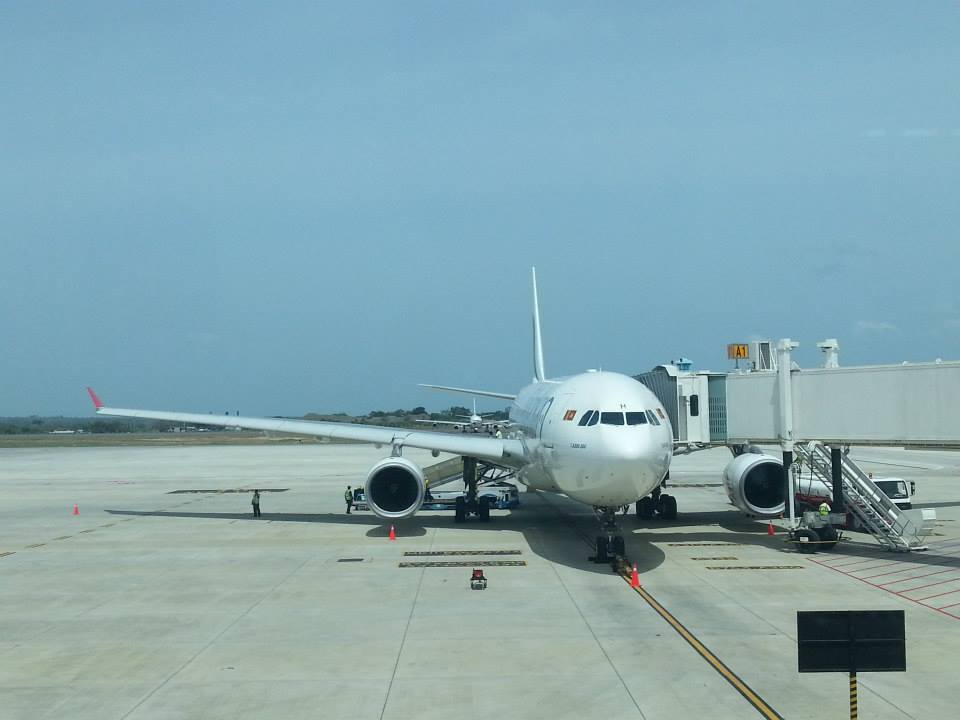
Photo: Sakith GW | Wikimedia Commons
The world’s emptiest airport, the Mattala Rajapaksha International Airport lies along a migratory route for birds. News also surfaced that the military deployed 100 troops to clear animals such as deer, elephants and wild buffalo and relocate them from the airport’s vicinity.

